
Nicholas I of Constantinople was the Ecumenical Patriarch of Constantinople from 1 March 901 to 1 February 907 and from 15 May 912 to his death on 15 May 925. His feast day in the Eastern Orthodox Church is 16 May.

Tsar SimeonI the Great ruled over Bulgaria from 893 to 927, during the First Bulgarian Empire. Simeon's successful campaigns against the Byzantines, Magyars and Serbs led Bulgaria to its greatest territorial expansion ever, making it the most powerful state in contemporary Eastern and Southeast Europe. His reign was also a period of unmatched cultural prosperity and enlightenment later deemed the Golden Age of Bulgarian culture.
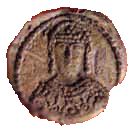
The Battle of Achelous or Acheloos, also known as the Battle of Anchialus, took place on 20 August 917, on the Achelous river near the Bulgarian Black Sea coast, close to the fortress Tuthom between Bulgarian and Byzantine forces. The Bulgarians obtained a decisive victory which not only secured the previous successes of Simeon I, but made him de facto ruler of the whole Balkan Peninsula, excluding the well-protected Byzantine capital Constantinople and the Peloponnese. The battle, which was one of the biggest and bloodiest battles of the European Middle Ages, was one of the worst disasters ever to befall a Byzantine army, and conversely one of the greatest military successes of Bulgaria. Among the most significant consequences was the official recognition of the imperial title of the Bulgarian monarchs, and the consequent affirmation of Bulgarian equality vis-à-vis Byzantium.
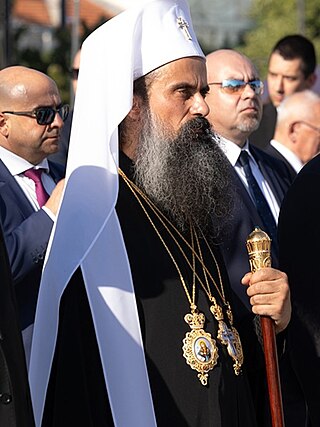
The Patriarch of All Bulgaria is the patriarch of the Bulgarian Orthodox Church. The patriarch is officially styled as Patriarch of All Bulgaria and Metropolitan of Sofia. The current patriarch Daniil acceded to this position on 30 June 2024.
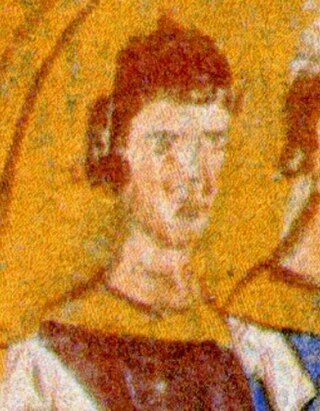
Ivan Vladislav served as the emperor (tsar) of the First Bulgarian Empire from approximately August or September 1015 until February 1018. The precise year of his birth remains elusive; he was born at least ten years prior to 987, but likely not much earlier than that.
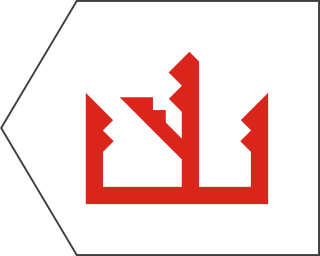
The Second Bulgarian Empire was a medieval Bulgarian state that existed between 1185 and 1396. A successor to the First Bulgarian Empire, it reached the peak of its power under Tsars Kaloyan and Ivan Asen II before gradually being conquered by the Ottomans in the late 14th century.

The First Bulgarian Empire was a medieval state that existed in Southeastern Europe between the 7th and 11th centuries AD. It was founded in 680–681 after part of the Bulgars, led by Asparuh, moved south to the northeastern Balkans. There they secured Byzantine recognition of their right to settle south of the Danube by defeating – possibly with the help of local South Slavic tribes – the Byzantine army led by Constantine IV. During the 9th and 10th century, Bulgaria at the height of its power spread from the Danube Bend to the Black Sea and from the Dnieper River to the Adriatic Sea and became an important power in the region competing with the Byzantine Empire.

In 926 a battle was fought in the Bosnian highlands between the armies of the Bulgarian Empire, under the rule of Bulgarian Tsar Simeon I, who at the time also fought a war with the Byzantine Empire, and the Kingdom of Croatia under Tomislav, the first king of the Croatian state. The battle is also known as the Battle of the Bosnian Highlands. It was fought in the Dinaric Alps of Eastern Bosnia near the rivers Bosna and Drina, the border area between the Kingdom of Croatia and the Bulgarian Empire.
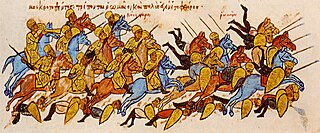
The Battle of Boulgarophygon was fought in the summer of 896 near the town of Boulgarophygon between the Byzantine Empire and the First Bulgarian Empire. The result was an annihilation of the Byzantine army which determined the Bulgarian victory in the trade war of 894–896.
The Battle of Pegae was fought between 11 and 18 March 921 in the outskirts of Constantinople between the forces of the Bulgarian Empire and the Byzantine Empire during the Byzantine–Bulgarian war of 913–927. The battle took place in a locality called Pegae, named after the nearby Church of St. Mary of the Spring. The Byzantine lines collapsed at the very first Bulgarian attack and their commanders fled the battlefield. In the subsequent rout most Byzantine soldiers were killed by the sword, drowned or were captured.
The People's Council of Preslav took place in 893. It was among the most important events in the history of the First Bulgarian Empire and was a cornerstone of the Christianization of Bulgaria under prince Boris I.

The Byzantine–Bulgarian war of 894–896 was fought between the Bulgarian Empire and the Byzantine Empire as a result of the decision of the Byzantine emperor Leo VI to move the Bulgarian market from Constantinople to Thessalonica which would greatly increase the expenses of the Bulgarian merchants.
The Bulgarian–Serbian wars of 917–924 were a series of conflicts fought between the Bulgarian Empire and the Principality of Serbia as a part of the greater Byzantine–Bulgarian war of 913–927. After the Byzantine army was annihilated by the Bulgarians in the battle of Achelous, the Byzantine diplomacy incited the Principality of Serbia to attack Bulgaria from the west. The Bulgarians dealt with that threat and replaced the Serbian prince with a protégé of their own. In the following years the two empires competed for control over Serbia. In 924 the Serbs rose again, ambushed and defeated a small Bulgarian army. That turn of events provoked a major retaliatory campaign that ended with the annexation of Serbia in the end of the same year.
The Byzantine–Bulgarian war of 913–927 was fought between the Bulgarian Empire and the Byzantine Empire for more than a decade. Although the war was provoked by the Byzantine emperor Alexander's decision to discontinue paying an annual tribute to Bulgaria, the military and ideological initiative was held by Simeon I of Bulgaria, who demanded to be recognized as Tsar and made it clear that he aimed to conquer not only Constantinople but the rest of the Byzantine Empire, as well.
The siege of Constantinople was fought in June 922 at the outskirts of the capital of the Byzantine Empire, Constantinople, between the forces of the First Bulgarian Empire and the Byzantines during the Byzantine–Bulgarian war of 913–927. In the summer the Byzantine Emperor Romanos I Lekapenos sent troops under the commander Saktikios to repel another Bulgarian raid at the outskirts of the Byzantine capital. The Byzantines stormed the Bulgarian camp but were defeated when they confronted the main Bulgarian forces. During his flight from the battlefield Saktikios was mortally wounded and died the following night.
Demetrius was the second Patriarch of the Bulgarian Orthodox Church and the first one to have been recognized by the Ecumenical Patriarch of Constantinople as a result of the Byzantine–Bulgarian Treaty of 927, which affirmed the Bulgarian victory in the War of 913–927 against the Byzantine Empire. Demetrius headed the Bulgarian Patriarchate in the first years of the reign of emperor Peter I.
Joachim III was the Patriarch of the Bulgarian Orthodox Church between c. 1282 and 1300, when the Second Bulgarian Empire reached its lowest point of decline during the reign of the emperors George Terter I, Smilets and Chaka. He was executed for treason by emperor Theodore Svetoslav in 1300. The Church did not recognize his guilt and his name was included in the list of Bulgarian Patriarchs in the Book of Boril. His seat was Tarnovo, the capital of Bulgaria.
Ignatius was a Patriarch of the Bulgarian Orthodox Church in the 13th century during the rule of Emperor Konstantin Tih. He is listed as the fourth Patriarch presiding over the Bulgarian Church from Tarnovo in the medieval Book of Boril.
Joachim I was the Patriarch of the Bulgarian Orthodox Church between 1235 and 1246. He was the first head of the restored Bulgarian Patriarchate with seat in Tarnovo, the capital of the Second Bulgarian Empire. Joachim I died of natural death on 18 January 1246 and was proclaimed a saint. He was the founder of an extensive monastic complex known as the Rock-hewn Churches of Ivanovo, now included in the UNESCO World Heritage List.